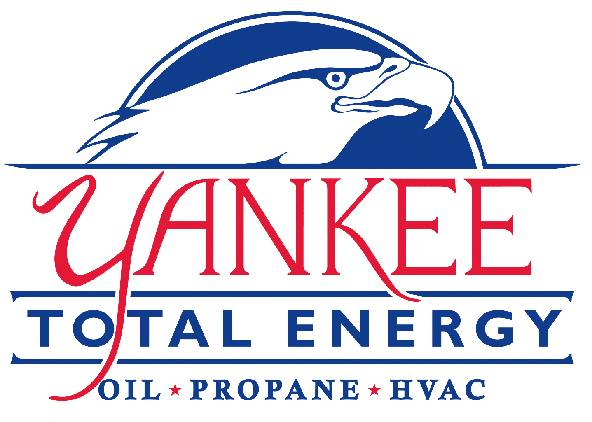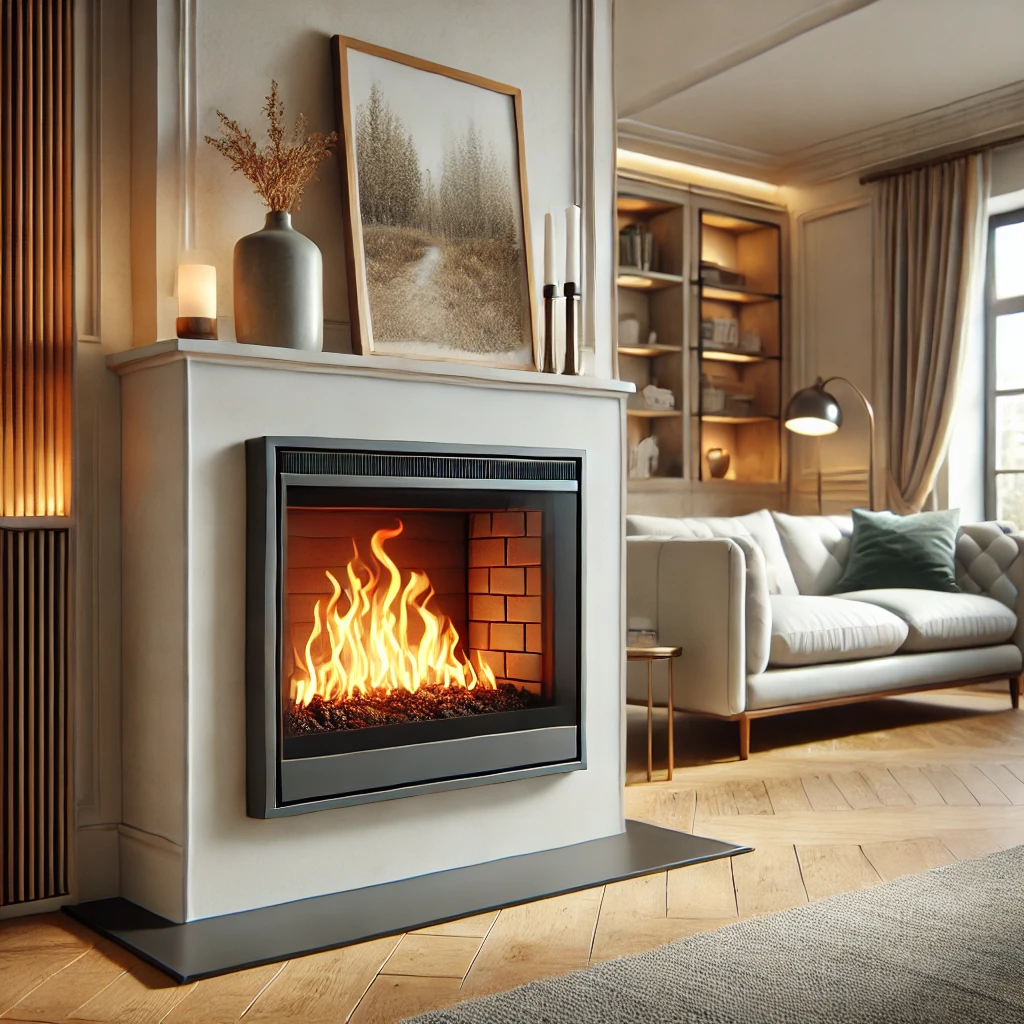Introduction: A Warm, Inviting Home with Modern Gas Inserts
There’s nothing quite like the cozy warmth of a fireplace to create an inviting atmosphere in your home. Traditional wood-burning fireplaces have long been a favorite for their charm and crackling logs, but they often come with challenges like wood storage, ash cleanup, and heat loss through the chimney. For homeowners seeking a more convenient, efficient option, modern gas insert fireplaces provide the perfect solution. With the flip of a switch, you can enjoy a beautiful flame, efficient heating, and minimal maintenance.
In this guide, we’ll explore the benefits of gas insert fireplaces, the installation process, maintenance tips, and how they can improve your home’s efficiency and ambiance.
What is a Gas Insert Fireplace?
A gas insert is a self-contained unit designed to fit into an existing fireplace opening. Unlike traditional fireplaces, which rely on an open flame and chimney to vent smoke, gas inserts are designed with a sealed combustion chamber. This design ensures that nearly all of the heat produced by the insert is used to warm your home, making them a highly efficient alternative.
Types of Gas Inserts:
- Direct Vent Gas Inserts: These use a dual-chamber system to draw air in from outside and expel combustion gases through a vent. This makes them ideal for efficiency and safety.
- Vent-Free Gas Inserts: These do not require a chimney or flue, making them easier to install. They burn cleanly and are designed to keep combustion byproducts inside the home.

Benefits of Installing a Gas Inserts
1. Energy Efficiency and Cost Savings
Gas inserts are known for their high energy efficiency. Unlike traditional fireplaces, where much of the heat escapes through the chimney, a gas insert uses a sealed combustion system that directs nearly all the heat into the room. This means you can keep your living space warm without wasting energy. Many models also come with thermostatic controls, allowing you to set and maintain a specific temperature, which can lead to further energy savings.
2. Low Maintenance and Easy Operation
One of the most appealing aspects of gas inserts is their convenience. With traditional wood-burning fireplaces, you need to chop or purchase wood, deal with ash cleanup, and ensure proper airflow through the chimney. A gas insert eliminates these tasks, offering a low-maintenance heating solution. You can turn it on with a remote control or wall switch, adjust the flame height, and enjoy instant warmth without the hassle of fire-building.
3. Enhanced Home Ambiance
Gas inserts provide the aesthetic appeal of a traditional fireplace without the drawbacks. Modern gas inserts feature realistic logs and vibrant flames, creating the look and feel of a wood-burning fire. They are available in a variety of designs and finishes, allowing you to customize the insert to match your home’s decor. Whether you’re looking to add a cozy focal point to your living room or create a warm ambiance in a bedroom, a gas insert can transform any space.
4. Environmentally Friendly Option
Gas inserts produce fewer emissions than wood-burning fireplaces. They burn natural gas or propane, which releases significantly less particulate matter and pollutants into the air. For homeowners who want to reduce their carbon footprint without sacrificing the warmth and charm of a fireplace, gas inserts offer an eco-friendly solution.
5. Safety and Clean Air
Traditional fireplaces can pose safety risks due to sparks, smoke, and creosote buildup in chimneys. Gas inserts, on the other hand, feature sealed combustion chambers that contain the fire within the unit, reducing the risk of indoor air pollution. Additionally, they do not produce smoke or soot, making them a safer option for homes with children, pets, or individuals with respiratory concerns.
The Gas Insert Installation Process
Installing a gas insert is a straightforward process when handled by a professional technician. Here’s what to expect during installation:
Step 1: Assessing Your Fireplace and Choosing a Gas Insert
Before installation, a technician will inspect your existing fireplace to ensure it’s suitable for a gas insert. The dimensions of the firebox and the condition of the chimney or venting system will be checked to determine the best fit. You’ll also select a gas insert model that matches your heating needs and design preferences.
Step 2: Preparing the Site and Installing Venting
If you opt for a direct vent gas insert, the technician will install venting that draws in fresh air and expels combustion gases outside. Venting typically runs through the existing chimney, which minimizes the need for extensive construction work. Vent-free models, meanwhile, require minimal changes to your existing setup.
Step 3: Connecting the Gas Line
A certified technician will connect the gas insert to your home’s natural gas or propane line. This step ensures the unit has a steady fuel supply and is safe to operate. The technician will test for leaks and ensure that all connections are secure.
Step 4: Final Setup and Testing
Once installed, the gas insert is tested to ensure proper functionality. The technician will adjust the burner settings, check the flame appearance, and ensure that the remote or thermostat controls work as intended. After setup, you’ll receive instructions on how to operate your new gas insert safely.
Maintenance Tips for a Long-Lasting Gas Insert
While gas inserts are low maintenance, regular care can help extend their lifespan and ensure safe operation. Here are some tips:
- Annual Inspections
Schedule an annual inspection with a professional to check the gas lines, venting, and burner for any potential issues. Regular inspections can help identify problems before they become major repairs. - Clean the Glass
Over time, the glass front of the gas insert may develop a hazy film due to condensation or residue. Clean the glass with a non-abrasive cleaner recommended by the manufacturer to keep the view of the flames clear. - Check and Replace Batteries
If your gas insert uses a remote control or battery-powered ignition system, check the batteries regularly and replace them as needed to ensure reliable operation. - Keep the Surrounding Area Clear
Make sure the area around the gas insert is free of flammable materials and clutter. This ensures safe airflow and reduces fire risk. - Check for Unusual Smells or Noises
If you notice any unusual smells (like gas) or sounds coming from the unit, turn off the gas insert immediately and contact a professional for inspection.

Cost Savings with Gas Inserts
Switching to a gas insert can result in substantial energy savings over time. Here’s how:
- Lower Utility Bills: By using a gas insert to heat your main living area, you can reduce the strain on your central heating system, potentially lowering your overall heating costs.
- Efficient Zone Heating: Gas inserts allow you to focus warmth where it’s needed most, rather than heating the entire home. This makes them ideal for zone heating, which can save energy.
- Tax Incentives: In some regions, homeowners can take advantage of rebates or tax incentives for installing energy-efficient heating appliances, including gas inserts. Check with local utility providers to see if you qualify.
Why are Gas Inserts a Smart Choice for Your Home
A gas insert fireplace is an excellent investment for homeowners looking to enhance their home’s ambiance while improving heating efficiency. With easy operation, minimal maintenance, and a variety of styles to choose from, gas inserts offer the perfect blend of comfort, convenience, and cost savings. Whether you want to create a cozy atmosphere in your living room or add a touch of luxury to your home, a gas insert can transform any space into a warm, inviting retreat.


Leave a Reply